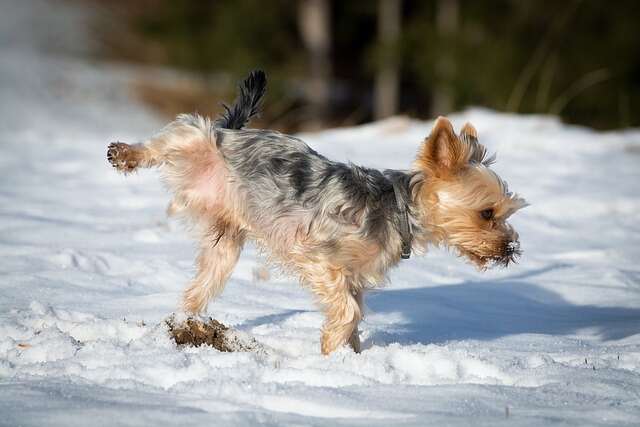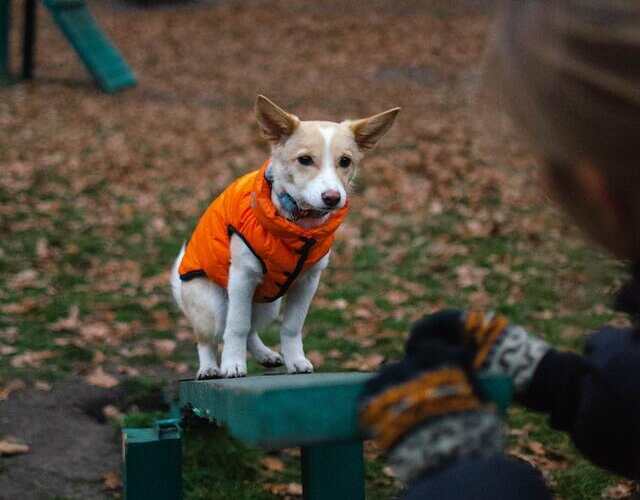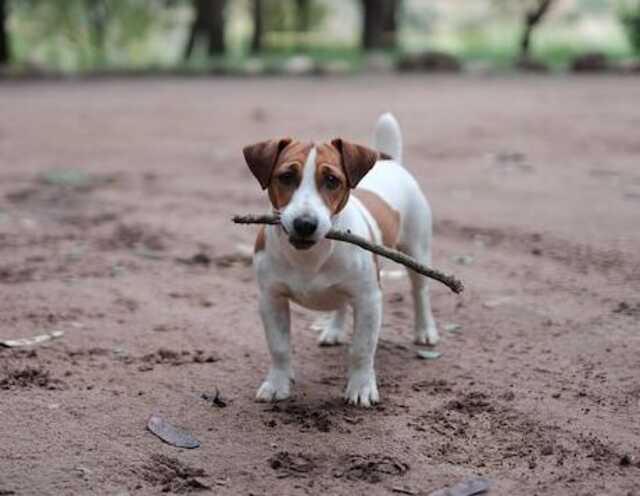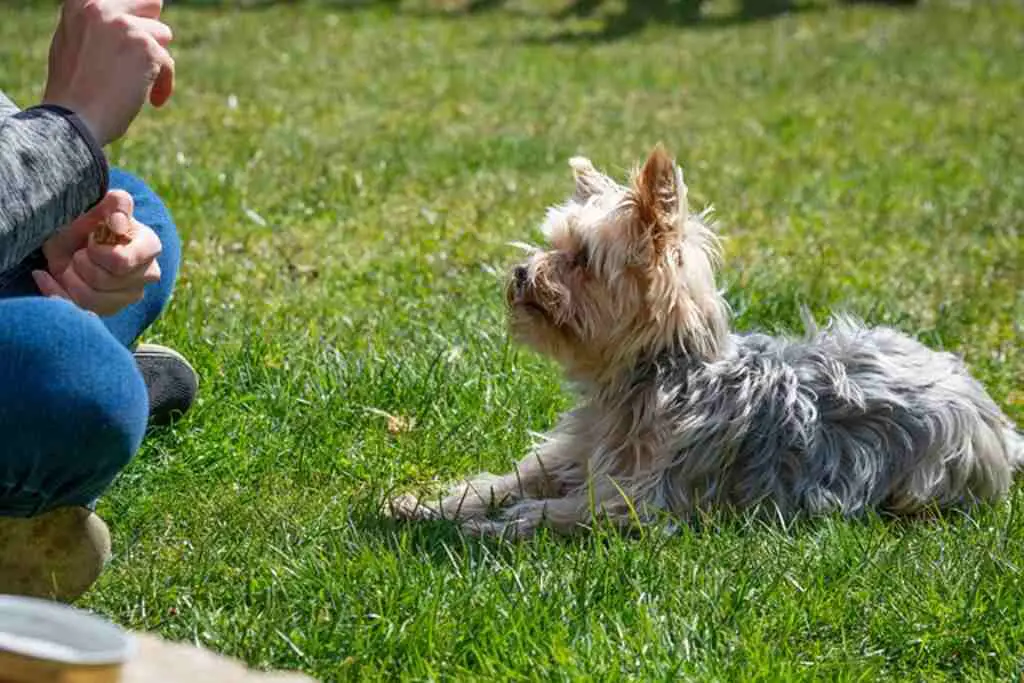When it comes to training small dog breeds, it’s also important to note that they may have a stronger prey drive than larger breeds, which means they may have a strong desire to chase after small animals. Pet owners should be aware of this and take necessary precautions, such as keeping their small dog on a leash during walks or in a securely fenced area during playtime.
Another important aspect of understanding small dog breeds is their vocal nature. Small dog breeds tend to be more vocal than larger breeds, and may bark or yelp more frequently. Pet owners should be prepared for this and should train their small dog to bark less or only when necessary. This can be achieved through positive reinforcement and consistent training.
In summary, understanding the unique characteristics and traits of small dog breeds is crucial for pet owners in order to effectively train and manage their furry companions. It’s important to be aware of their high energy level, short attention span, delicate physical structure, tendency towards anxiety and aggression, strong prey drive, and vocal nature.
By keeping these traits in mind, pet owners can tailor their training approach to better suit the needs of their small dog breed.
- Training Tips for Small Dog Breeds
- Frequently Asked Questions
- What are the best training methods for small dog breeds?
- How can I address behavioral issues in small dog breeds?
- How can I keep my small dog breed mentally stimulated?
- How can I keep my small dog breed physically healthy?
- What are the common health issues for small dog breeds?
- How often should I train my small dog breed?
- How can I prevent my small dog breed from becoming aggressive?
- What are the best types of treats to use for training small dog breeds?
- How can I prevent my small dog breed from becoming anxious?
- How can I ensure that my small dog breed stays healthy as it gets older?
Training Tips for Small Dog Breeds
Basic Training Techniques for Small Dog Breeds
Small dog breeds are highly trainable, but they require a different approach than larger breeds. Basic training techniques, such as sit, stay, come, and heel, are effective for small dog breeds, but they should be taught in shorter training sessions.
Consistency is key when training small dog breeds, and pet owners should be patient and persistent. Positive reinforcement is also an important aspect of training small dog breeds, as it will encourage them to continue to learn and grow.
One effective way to train small dog breeds is through the use of small treats or rewards. These reward or treat should be given immediately after the small dog completes a desired behavior, such as sitting or staying.
This will help to reinforce the behavior and encourage the small dog to repeat it in the future. Pet owners should also use a calm and assertive tone when training their small dog breed, as this will help them to understand that you are the leader and they should follow your commands.
Another important aspect of basic training for small dog breeds is consistency. Pet owners should be consistent in their training methods and commands, as well as the rewards they use.
This will help the small dog to understand what is expected of them and make it easier for them to learn. Additionally, it’s important to start training at an early age, when the dog is still young and more receptive to learning new things.
In summary, basic training techniques such as sit, stay, come and heel, are effective for small dog breeds, but they should be taught in shorter training sessions.
Consistency and positive reinforcement are key when training small dog breeds, and pet owners should use small treats or rewards to reinforce desired behaviors.
Additionally, pet owners should be consistent in their training methods, commands and rewards, and start training at an early age.

Potty Training for Small Dog Breeds
Potty training is an important aspect of training small dog breeds. However, many pet owners find it to be a challenging task, especially when dealing with small breeds.
The key to successful potty training for small dog breeds is to start early and be consistent. Pet owners should establish a potty training routine and stick to it, as this will help the small dog to understand when and where they should go to the bathroom.
One effective way to potty-train a puppy is through the use of a designated potty area. This can be a specific area in the yard or a designated indoor area, such as a small litter box.
Pet owners should take their small dog to this designated potty area at regular intervals, such as after meals, naps, and playtime. This will help the small dog to understand that this is the designated area for going to the bathroom.
Another important aspect of potty training small dog breeds is to be consistent with the use of commands. Pet owners should use the same command each time they take their small dog to the designated potty area, such as “go potty” or “do your business.”
This will help the small dog to understand what is expected of them and make it easier for them to learn. It’s also important to supervise your small dog during the potty training process, as they may have accidents or need to go to the bathroom at unexpected times.
If your small dog has an accident, it’s important to remain calm and not to scold or punish them. Instead, simply clean up the accident and redirect your small dog to the designated potty area.
In summary, potty training for small dog breeds can be a challenging task, but it is crucial for pet owners to start early and be consistent.
Designating a specific potty area and using consistent commands can help make the process easier.
Additionally, it’s important to supervise your small dog during the potty training process and remain calm if accidents occur.

Socialization and Behavioral Training for Small Dog Breeds
Socialization and behavioral training are crucial for small dog breeds, as they have a higher tendency towards anxiety, nervousness and aggression if not socialized and trained properly.
Pet owners should start socializing their small dog at an early age and expose them to a variety of people, animals, and environments. This will help them to become well-adjusted and confident adult dogs.
Socialization can be accomplished through a variety of methods, such as taking your small dog to the dog park, on walks, or to dog training classes. Pet owners should also expose their small dog to different types of people, such as children, elderly people, and people with disabilities.
This will help to prevent fearfulness or aggression towards these groups of people later on. Behavioral training is also important for small dog breeds.
Pet owners should work with a professional trainer or behaviorist to address any specific behavioral issues their small dog may have, such as aggression, separation anxiety, or destructive behavior.
These issues should be addressed as soon as they are noticed, to prevent them from becoming more severe and harder to correct. In summary, socialization and behavioral training are crucial for small dog breeds, as they have a higher tendency towards anxiety, nervousness and aggression if not socialized and trained properly.
Pet owners should start socializing their small dog at an early age and expose them to a variety of people, animals, and environments. Behavioral training should also be addressed as soon as any issues are noticed, to prevent them from becoming more severe and harder to correct.

Conclusion
Training small dog breeds can be a unique and challenging task, but with the right approach and techniques, pet owners can achieve their training goals and have a well-behaved and happy companion.
By understanding the unique characteristics and traits of small dog breeds, such as their high energy level, short attention span, delicate physical structure, tendency towards anxiety and aggression, strong prey drive, and vocal nature, pet owners can tailor their training approach to better suit the needs of their small dog breed.
Basic training techniques, potty training, and socialization and behavioral training are all important aspects of training small dog breeds. By being consistent, patient and persistent, pet owners can effectively train their small dog breeds.
Additionally, by seeking the help of professional trainers or behaviorists, pet owners can address any specific behavioral issues their small dog may have.
With a little bit of effort and dedication, pet owners can train their small dog breeds to be well-behaved, happy and enjoyable companions.
Frequently Asked Questions
What are the best training methods for small dog breeds?
When training small dog breeds, consistency and positive reinforcement are key. Establishing a specific potty area and using consistent commands can help with potty training.
Additionally, socializing your pup and providing behavioral training can help them learn essential skills such as listening to commands, proper interactions with other animals or people, and recognizing when they’re out of line.
Physical exercise is also important for mental stimulation; activities such as agility, flyball, and obedience competitions are great ways to keep your small breed stimulated while also reinforcing structure and discipline.
Following these simple tips and maintaining a consistent schedule can help your small pup learn quickly and effectively!
How can I address behavioral issues in small dog breeds?
Behavioral issues in small dog breeds can be tricky to address. First, it is important to identify the type of issue and its root cause. This can help you determine an appropriate strategy for addressing the problem.
Common behavioral problems include excessive barking, digging, or destructive chewing. To manage these behaviors, it is important to provide your pup with mental stimulation through activities like games and walks as well as physical exercise every day.
Additionally, providing consistent discipline when unwanted behaviors occur is also essential for strengthening obedience and teaching your pet what is acceptable and what isn’t.
Finally, reward-based training techniques such as clicker training can be extremely effective at encouraging good behavior and discouraging bad habits. With patience and consistency, you can effectively address behavioral issues in small dog breeds.

How can I keep my small dog breed mentally stimulated?
Small dogs need just as much mental stimulation as larger breeds, so providing engaging and stimulating activities for them is essential. Providing them with plenty of physical and mental exercise each day is one way to keep their minds active and engaged.
Puzzles like snack balls are great for getting your pup thinking about how to get their food. Create an agility course or teach them a range of tricks – this will help burn off excess energy while also keeping them entertained.
Invest in some chew toys, which can help keep their jaws strong and teeth clean, while also mentally stimulating them. Get creative with DIY toys made from different materials such as cardboard boxes, plastic containers, old socks – they’ll love sniffing out what you’ve created!
Additionally, allow plenty of time for your pup to explore outside, giving them the opportunity to dig and use their senses while learning new things.
Taking the time to give your dog plenty of mental stimulation is important for keeping them happy and healthy.
How can I keep my small dog breed physically healthy?
Keeping a small dog breed physically healthy requires regular exercise, proper nutrition, and routine veterinary care. Exercise can reduce stress and keep a small dog’s joints limber.
Regular walks and playtime will help burn off excess energy and maintain a healthy weight. Proper nutrition is also essential. Choose high quality foods that are suited to the size and needs of your small breed dog.
Finally, establishing a regular schedule with your veterinarian for preventive exams and vaccinations can help identify any health problems early on before they become more serious or costly to treat.
Taking these steps can help ensure that your small breed dog stays healthy and happy for years to come!
What are the common health issues for small dog breeds?
Small dog breeds have different health issues than large breeds. Common health problems for small dogs include dental issues, hypoglycemia, luxating patella, and tracheal collapse. Dental disease is a common problem in tiny breeds due to their overcrowded teeth.
Hypoglycemia can happen in canine companions that are smaller and not eating regularly, causing low blood sugar levels. Luxating patella is when the knee joint slips out of place, which can cause pain and lameness in small dogs if it gets worse over time.
Tracheal collapse is when the cartilage around the windpipe weakens, leading to difficulty breathing which should be monitored by a veterinarian.
To ensure your pup’s best health, it is important to bring them in for regular check-ups and address any health concerns immediately.

How often should I train my small dog breed?
Training your small dog breed is an important part of responsible pet ownership. It helps to ensure that your pup behaves properly, and is safe when out in public. The best approach for training small breeds is to keep things short and consistent.
Try to train your pup at least once a day; the length of each session should be between 5–10 minutes, depending on their attention span.
As you continue training, you can increase the duration of each session in order to work on more complex commands or behaviors.
By keeping up regular training sessions with your pup, you will help them learn quickly and build strong habits that will last a lifetime!
How can I prevent my small dog breed from becoming aggressive?
Socializing and behavioral training are key components to preventing aggressive behavior in small dog breeds. This should begin as soon as possible, either through puppy classes or with a professional trainer.
Working on basic commands such as sit, stay, come, and heel can help your pup learn to control their impulses and emotions. Additionally, providing enough exercise by taking walks and playing games is key for mental stimulation that can prevent aggressive behavior.
Positive reinforcement works great when teaching these commands and behaviors, rewards like treats or praise can have immense value. When it comes to aggressive behavior prevention in small dog breeds, socialization and behavioral training combined with regular exercise and positive reinforcement are the best routes to take.
What are the best types of treats to use for training small dog breeds?
When training small dog breeds, it is best to use small, bite-sized treats. This way, they can be quickly consumed during the training session and are not too distracting when trying to get their attention.
Low-calorie treats, such as pieces of boiled chicken or cheese, are also a good option because they provide less fat than traditional treats while still providing a reward for good behavior.
Make sure that whatever treat you choose does not contain any ingredients that could potentially trigger an allergic reaction in your pup.
Choosing the right type of treat for your particular pup is important for ensuring successful and enjoyable training sessions.

How can I prevent my small dog breed from becoming anxious?
Exercising regularly, providing mental stimulation, and offering positive reinforcement to your small dog can go a long way in preventing anxiety. Walks and playtime are great ways to burn off energy that could otherwise lead to hyperactivity or anxious behavior.
Additionally, exposing your small pup to a variety of people, animals and environments from an early age will help them become better socialized and more confident on their own.
Behavioral training is also beneficial; teaching commands like “sit” or “stay” reinforce the idea of following rules and having boundaries within the home which make for calmer days ahead!
With these steps, you can make sure your small pup feels safe and secure so they don’t have to worry about feeling anxious.
How can I ensure that my small dog breed stays healthy as it gets older?
Regular check-ups with a veterinarian are essential in order to keep your small dog breed healthy as it gets older. Veterinarians can detect potential problems early and provide treatments if needed, which helps to maintain good health.
Additionally, your vet can provide advice on proper nutrition to make sure that your small dog is getting the nutrients it needs for its size and activity level. Regular exercise is also important for helping your small dog stay physically fit and mentally stimulated.
Don’t forget about regular grooming too – brushing and bathing help keep skin and coat healthy, as well as ensuring any parasites are spotted quickly and treated appropriately.
With a combination of these four key elements, you can ensure that your small dog breed stays healthy as it gets older.
Related Post:



